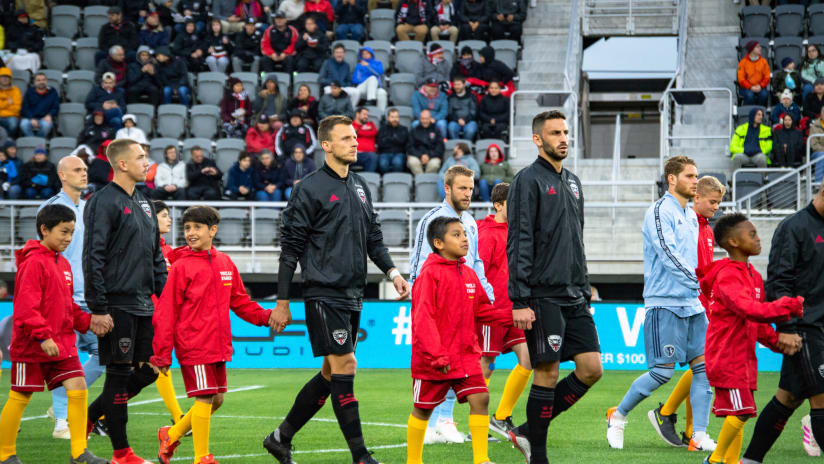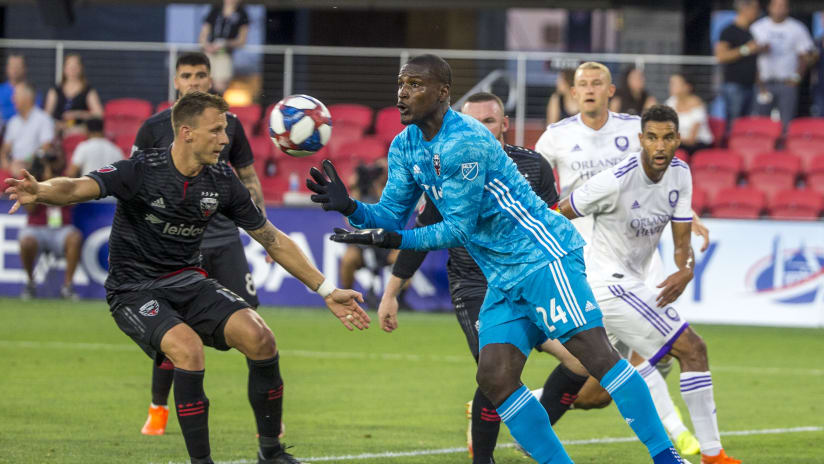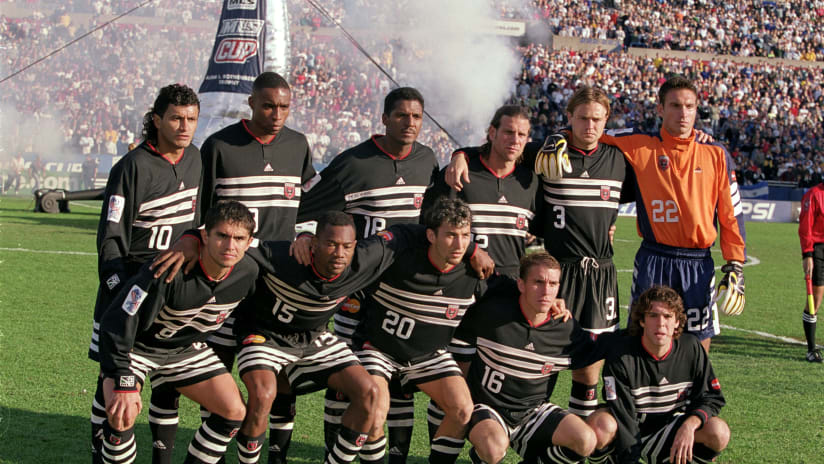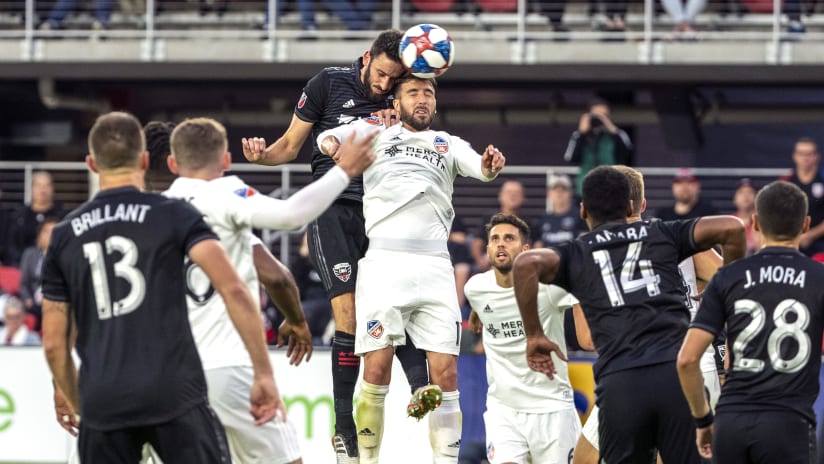Observers of D.C. United’s 1-0 victory over the Portland Timbers on Sunday likely heard the ESPN broadcast crew wondering how much more Ben Olsen’s defense could withstand in the face of ceaseless pressure from the opposition.
The Timbers, playing at home, controlled the ball for 67.3 percent of the game. They outshot their opponents 23-7 and sprayed the United penalty area with 39 crosses. Exactly 40 percent of the match took place in the away third of the field, the section closest to United’s goal.
And yet, after 90 minutes and then a few minutes more, the Timbers left Providence Park with nothing. No goals, no points, no answers to unlock the Black-and-Red defense. It’s fair to say frustration probably rippled through the Portland dressing room, while Olsen’s bunch was predictably elated.
“We’re a tough team to beat right now,” Olsen said after the match. “There’s a lot of effort, a tremendous commitment defensively, and I think the box defending has been very, very sound. So that’s kind of seen us through these last two games, and that’s got to be a real staple going forward.
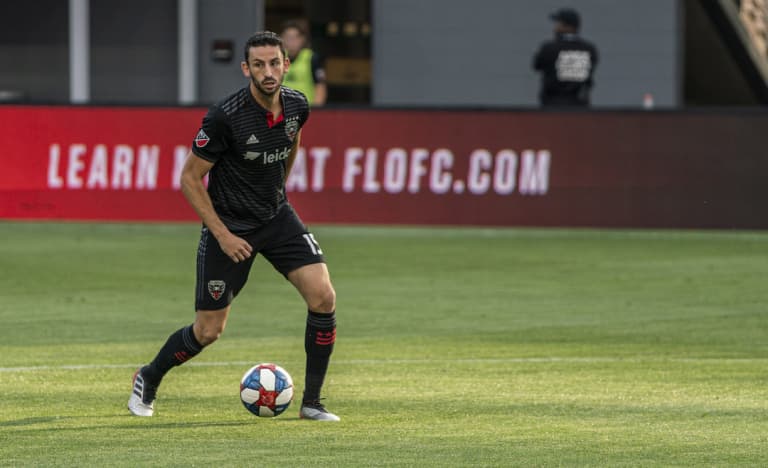
“I think we lost our way a little bit in the summer: not being gritty enough, not understanding who we are and how we’re successful. Again, it starts on the defensive end for me and everybody being extremely selfless, hard-working and defending the box. We’ve got guys that can make plays. The offensive side can get better. We have to push that part so we’re not having heavy stretches of defending like we did in the second half here and also the second half in Montreal. But that’s something we can work on.
“I’m very proud. I mean, there were four or five guys laid out after that game, absolutely exhausted. And it shows that this group is committed and wants to do something in the playoffs.”
So with three regular season games remaining, and with United in strong position to qualify for the playoffs, this notion of defensive soccer as the key to success has once again resurfaced around the Black-and-Red, who have kept consecutive clean sheets for the first time since May 12 (1-0 win over Sporting Kansas City) and May 15 (0-0 draw against Toronto FC), grasping 6 points in two matches after managing only 3 from their previous five games.
But what exactly does defensive soccer look like for United? What are they doing so well to survive, at times, with very little control of the ball? How are they managing to bend without breaking and making that style seem fairly effective?
Olsen calls it the art of defending.
“It’s nice to know we can be one of the better defensive teams in the league if we need to be in that structure, which I think is a little bit disrespected at times,” Olsen said after Wednesday’s training session. “There’s an art to defending, and these guys have put a lot of work in and are making a lot of tactical decisions out there within the group to solve problems and keep the ball out of the net against a very dynamic team in Portland and also Montreal.”
Winning without the ball
A common theme from United’s last three victories — against Portland, Montreal and the LA Galaxy — has been a significant disparity in possession favoring their opponents, all three of which controlled at least 65.5 percent of the play while combining for just a single goal.
Yet over the course of the season, and in many ways Olsen’s tenure as a whole, such a trend is far from unusual for a team that prides itself on the defensive end of the field. After Sunday’s game, United ranks 19th in the league in possession (46.9 percent) ahead of only the New York Red Bulls (46.8 percent), Minnesota United (44.35 percent) and the New England Revolution (44.34 percent) among teams occupying playoff positions. And of their 12 wins this season, 10 of them have seen United’s opponent control greater than 50 percent possession:
March 3 — D.C. United 2, Atlanta United 0. Possession favored Atlanta: 55.8 percent to 44.2 percent
March 6 — D.C. United 5, Real Sal Lake 0. Possession favored United: 56.7 percent to 43.3 percent
March 31 — D.C. United 2, Orlando City 1. Possession favored Orlando: 54.3 percent to 45.7 percent
April 13 — D.C. United 3, Colorado Rapids 2. Possession favored Colorado: 54.8 percent to 45.2 percent
April 24 — D.C. United 1, Columbus Crew 0. Possession favored Columbus: 59 percent to 41 percent
May 4 — D.C. United 3, Columbus Crew 1. Possession favored Columbus: 52.7 percent to 47.3 percent
May 12 — D.C. United 1, Sporting Kansas City 0. Possession favored United: 50.3 percent to 49.7 percent
June 26 — D.C. United 1, Orlando City 0. Possession favored Orlando: 54.2 percent to 45.8 percent
July 18 — D.C. United 4, FC Cincinnati 1. Possession favored Cincinnati: 57.3 percent to 42.7 percent
Aug. 11 — D.C. United 2, LA Galaxy 1. Possession favored LA: 69.7 percent to 30.3 percent
Aug. 31 — D.C. United 3, Montreal Impact 0. Possession favored Montreal: 65.5 percent to 34.5 percent
Sept. 15 — D.C. United 1, Portland Timbers 0. Possession favored Portland: 67.3 percent to 32.7 percent

United’s overall possession statistic of 46.9 percent is fairly typical of the Olsen era. Dating to 2011, which was Olsen’s first full season in charge, the possession numbers have ranged from a high of 53.5 percent in 2013 to a low of 44.9 percent in 2017. Even last season when the arrival of striker Wayne Rooney jolted the franchise to life in mid-July — Rooney made his debut July 15, 2018 — United still maintained just 49.8 percent of possession for the remainder of the year in the midst of an epic playoff run.
Most crucially, though, United has dropped the second-fewest points from winning positions in MLS this season with 5, an impressive figure for a team that is tied with Orlando City for the fourth-fewest goals scored this season. It means that once Olsen’s side grabs a lead, they keep it, protecting even the narrowest of margins with supreme efficiency.
“I think we know we’re not the best footballing team in the league,” Rooney said after the victory over Portland. “We like to try and make games a bit scruffy at times and work hard and dig in and try to get the 3 points. That’s how we’ve won most of our games this season, so we all need to work together to do that. It will be tough of course, but if we do that then we give ourselves a good chance.”
Dictating with defense
When watching a game in which one team dominates possession and the other bunkers in defensively, it can be easy to make assumptions about which team is dictating play. Conventional logic says the team with the ball is probably exerting more control than one without it.
And while that is often true to a certain extent, there are other factors to be considered: Is the team with the majority of possession generating quality opportunities or are they passing for the sake of passing? Is the team with less possession hanging on for dear life or staying calmly committed to its defensive structure?
“Possession wasn’t there, but the defending side and compactness of the team was there,” right back Russell Canouse said of Sunday’s victory in Portland. “I felt confident that they weren’t going to break us down even with their possession.”
Along those lines, Sunday’s game was close to an ideal defensive performance for United, who found ways to dictate the game without seeing much of the ball in what was an immense credit to both their overall discipline and keen understanding of how to play to their strengths. The end result, as Canouse said, was a rather unthreatened defense despite the volume of shots and crosses United faced. (It should be noted, however, that the Timbers did hit the woodwork twice.)
By consistently funneling the Portland attack down the wings, United encouraged the Timbers to whip crosses into the penalty area toward Steven Birnbaum and Frederic Brillant, who form arguably the most aerially gifted center back pairing in the league, a duo that expects to win header after header regardless of the opposition. They welcomed Portland’s challenge.
As a team, United leads the league in clearances on the road with 461 and ranks second in total clearances across all venues with 730. They also rank second in the league in duels won with 1,724 and lead the league in headed clearances on the road with 242 — a whopping 54 more than the Vancouver Whitecaps, who rank second in that category. And from an individual standpoint, Birnbaum is enjoying perhaps the best season of his career at age 28, leading the league in aerials won with 159, some 25 more than the next-highest total.
“Me and Fred have a good thing going on right now,” Birnbaum said. “We’ve built a good relationship over the last year and half, two years now. We know each other’s tendencies and we know that everyone is going to cover each other’s back. So we’ve got a great little pairing going, and I’m happy to play with him.”
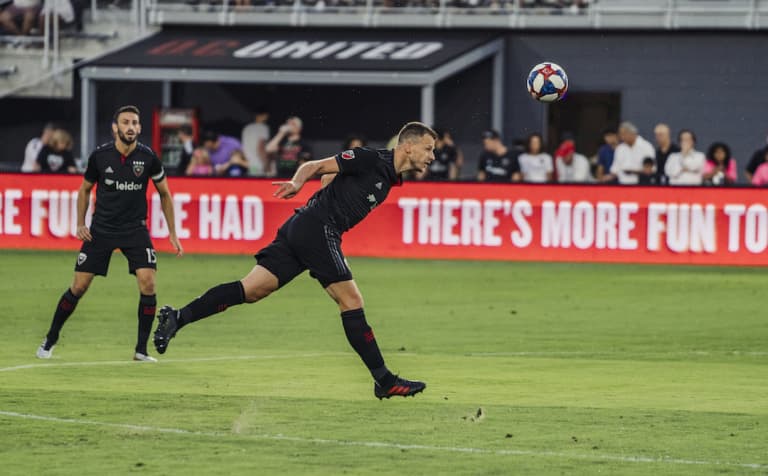
In the moments when the Timbers grew tired of crossing they launched shots from distance in hopes of beating Hamid, who has already eclipsed his career high for saves in a season. According to data from WhoScored, 48 percent of Portland’s shots originated outside the box against a goalkeeper who ranks tied for first in save percentage on exactly those kinds of attempts at 90.9 percent, tied with Luis Robles of the Red Bulls among keepers who have logged at least 2,000 minutes this season. To beat Hamid from that distance is an unlikely proposition and one United was happy to test.
“I think a lot of them were from 30 yards out,” Rooney said after the match, “and we trust our goalkeeper with shots from that far out. I thought we defended our box really well. I don’t think they had too many clean chances. If you’re going to defend deep, you’re going to concede shots, especially from distance.”
And many of those shots never reached Hamid at all, struck down by his teammates who had thrust themselves between ball and goal. United blocked eight shots Sunday — equivalent to 35 percent of Portland’s total attempts — to increase their league-leading tally to 161. The Whitecaps, who rank second in blocks, are the only other team with at least 122 blocks this season.
As a team, United will finish the year with the most blocks in the Olsen area, while Birnbaum, Brillant and Canouse, who had four blocks against the Timbers by himself, all rank among the top 10 in MLS in blocks per game for players with at least 1,800 minutes this season.
“I just think throwing my body in front of shots, sacrificing myself for the team has always been one of my big things that I take pride in and I try to always put out my best effort for that,” Canouse said. “I think that’s so important for trying to defend the box, defending all around. You need to be willing to do that.
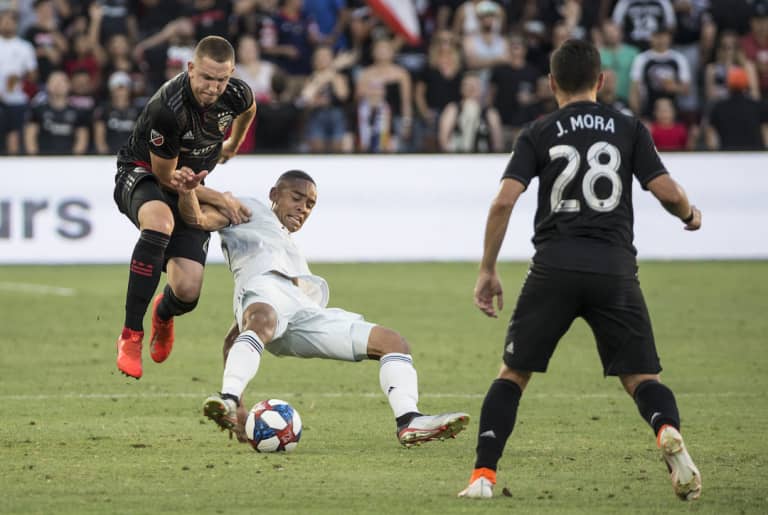
“We’re one of the best teams in the league at it. Obviously we’re dangerous on the counter, too, and we can put a chance away and get a goal every single game. So when it comes down to defending, we know we have a group that can do that and put in a shift 90 minutes long.”
Against Portland, then, you might say United was calmly under siege.
Finding a way out
Though United will rely heavily on its ability to defend and counter for the remainder of the season and beyond, coaches and players alike were open about the need to improve with the ball at their feet in the wake of Sunday’s victory in Portland. No team, they said, should be defending for such arduous, interrupted portions of a match.
“Even if you’re a team that defends well,” Canouse said, “you don’t want to withstand that type of pressure for 90 minutes, even if you have the ability to do so.”
Statistics tracked by WhoScored show the Black-and-Red are tied for the second-most time spent in their defensive third this season at 31 percent. And conversely, Olsen’s side have spent the second-fewest time in the attacking third at 24 percent.
It means that a point of emphasis for the remainder of the season will be finding ways to maintain enough possession to relieve the heavy stretches of defending they are likely to face, with this week’s game against the Seattle Sounders expected to unfold in a similar fashion. Olsen and his staff have been stressing the importance of not only generating counter attacks, which is an area where United ranks among the top seven in the league this season, but finding ways to produce goals from those opportunities, which United has done far less effectively with just two on 14 shots from fast breaks.
An ideal balance would be to absorb and sting, absorb and sting, not unlike the team’s victory over the Galaxy last month.
“Everybody has to be super engaged in those times where you’re having trouble getting out, and you’re pinned back, and teams are throwing eight players forward,” Olsen said. “And there’s two ways to do that: One way is to surround the box, deal with crosses, block shots, do all the little things. The other way is to go stick the knife in (at the other end of the field) and punish teams for being extremely risky and throwing that many numbers forward.
“We had a chance or two to do that and we weren’t able to kind of get that second goal (in Portland), but we had chances to do that. Certainly there’s ways that we’ll work on this week to get out, to find more possessions in halves like that. But again, everyone wants to talk about possession and how much attack they had, but we got 3 points, and I think sometimes we get a little bit caught up and not appreciating what some of these guys do on the field and the art of defending the box.”
It will be United’s calling card for however long this 2019 season lasts.

